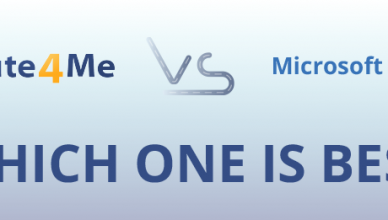With route optimization software, you can guarantee that every route you give your drivers is the most efficient route possible. That way, your drivers will show up on time more often, so you can maintain a good reputation. Also, more efficient routes means your drivers can visit more customers every day. You’ll be able to expand your business without hiring more employees.
That’s not the only thing route optimization software can do for you. GPS tracking, eSignature capabilities, and other features will also make it easier for you to manage your employees and keep your customers happy.
Not all route optimization programs have those features, though. You don’t want to commit yourself to software that’s less useful than your other available options.
How do you know which route mapping software is right for you? Allow us to provide you with some information that will help you make this decision:
On-Premises Vs. Cloud-Based
There are two kinds of routing optimization software: on-premises and cloud-based.
On-premises software is installed on your own computers and servers. This can make it difficult to communicate with your drivers. Any change you make to a route on your office computer won’t be shared with a driver that’s already on the road. If a customer wants to make a change at the last minute, there’s no easy way to relay that information.
Using cloud-based software solves that problem. Instead of installing the software on your own equipment, cloud-based software is accessed remotely. It’s stored somewhere else. Any change you make to a route on your office computer will be immediately shared with your drivers – it’s like you’re using the same program at the same time. Last-minute requests from your customers can be easily accommodated.
RELATED : 7 Reasons You Should Adopt SaaS Vehicle Route Planning Software
GPS Tracking
Workers tend to slack off when they’re unsupervised, and drivers are almost always unsupervised. They might stop at a cafe or a friend’s house to hang out when they should be working.
Payroll is one of your biggest expenses, right? You can’t afford your employees wasting time like that.
GPS tracking can help here.
How does GPS tracking work?
GPS tracking helps you visualize your drivers’ activities on a map in real time so that you can immediately know if a field rep or driver makes an unauthorized stop or takes longer than planned at a specific destination.
Long story short, if your drivers start doing something other than what you’re paying them to do, you’ll know about it immediately.
Also, GPS tracking software improves driver safety. In addition to showing you where your drivers are, it shows you how fast they’re going. So even when you’re at your office, miles away from your drivers, you’ll know when they’re speeding. You can tell them to cut it out.
Because of its positive effect on driver safety, many insurance companies offer lower premiums to businesses that use GPS tracking.
You can see what your drivers are doing in real-time with GPS tracking, and you can also store this information to review later. This data gives you an in-depth look into driver performance, resource allocation, etc. You’ll be able to make more informed business decisions.
Another bonus: without GPS tracking software, if someone steals one of your vehicles, you can pretty much kiss it goodbye. But when you do have GPS tracking software, you’ll have a good chance of recovering a stolen vehicle.
RELATED : GPS Tracking Protects Vehicles And Cargo From Theft
Easy-To-Use Interface
Route optimization software won’t do you much good if your drivers can’t figure out how to use it. A simple, easy-to-use interface is a must-have feature for your route planer. The whole point of route scheduling software is to save time. If the software’s confusing, it’ll just end up slowing your drivers down.
Read the following article to learn more about final mile delivery software:
9 Questions You Must Ask Your Route Optimization Software Provider
The Free Trial
But how will you know if route mapping software is easy to use if you haven’t bought it yet?
That’s why it’s so important to try software for free before you buy it. If a company isn’t confident enough in their product to let you try it out before you commit to a contract, they’re not worth your time.
A free trial also gives you a chance to test a company’s customer support. During your trial, give the company’s support line a call, even if you don’t actually run into an issue. Did they pick up, or did you need to leave a message? If you left a message, how long did it take them to get back to you? Send them an email, too. How long did it take them to respond to that?
You don’t want to be left hanging when you’re in need of assistance. Every hour you don’t have access to a map route planner like Route4Me route planner is an hour when you lose money because your business won’t be as efficient as it could be.
Contract Length
So, let’s say you’ve found a route optimization solution that’s cloud-based, easy to use, and has a GPS tracking feature. Then, you tested their customer support, and they were sufficiently responsive. That’s all you need to know, right?
Not so fast (record scratch).
Before you sign on the dotted line, look at the length of the contract. You shouldn’t commit to final mile optimization software for a year or more. A quarterly or monthly contract is better, because you’ll be able to get out of the arrangement quicker if you decide that’s what you want to do.
You might be satisfied with the software now, but who knows how you’ll feel a month or two from now. You might run into some glitch that didn’t pop up during your free trial. A short-term contract gives you the freedom to do what’s best for your business when something goes wrong.
Do you have any questions about route optimization software? Let us know in the comments section below.
Featured image credit : ChristianChan/Shutterstock.com
Want To See For Yourself How Route4Me Can Boost Your Profits?








